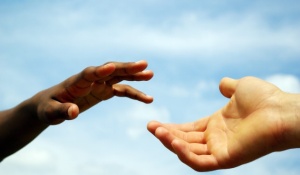Disability and Accessibility Resources

This page serves as the hub for disability and accessibility resources and information. It looks to reclaim the visibility of disable and different able individuals, embracing disability as an integral part of identities, showing resilience in the face of discrimination and ableism.
Accessibility Resources at UB

What is Considered a Disability?
There are many different types of disabilities such as intellectual, physical, sensory, and mental illness. Their definitions include:
Intellectual Disability
According to the American Psychiatric Association, involves problems with general mental abilities that affect functioning in two areas:
- Intellectual functioning (such as learning, problem solving, judgment).
- Adaptive functioning (activities of daily life such as communication and independent living).
Additionally, the intellectual and adaptive deficit begin early in the developmental period. Intellectual disability affects about 1% of the population, and of those about 85% have mild intellectual disability. Males are more likely than females to be diagnosed with intellectual disability.

Highlight: Down Syndrome
Physical Disability
According to the University of Texas at Austin, Physical Disability is a variety of physical disabilities result from neuromuscular and orthopedic impairments. These disabilities may be congenital or they may be the result of an accident or illness. They may include conditions such as spinal cord injury, paralysis, cerebral palsy, severe forms of arthritis, polio/post-polio, spina bifida, orthopedic injury, amputation, cardiac conditions, cystic fibrosis, later stages of AIDS, stroke, and muscular dystrophy.
The range of disabilities in this category is large. Functional abilities and limitations will vary widely, even within one disability group. Some conditions are such that the person experiences pain, spasticity, or lack of coordination.

Highlight: Amputations
Sensory Disability
The Disability Support Guide Platform in Australia defines it as such: the disability that affects one, some or all of a person’s senses (sight, hearing, smell, touch and taste). People with a sensory disability may feel sensory input more or less intensely than other people. This impacts their ability to interact with different environments and perform daily activities, especially when those environments are not designed to be accessible or inclusive.

Highlight: Autism
Mental Illness
According to the American Psychiatric Association, mental illnesses are health conditions involving changes in emotion, thinking or behavior (or a combination of these). Mental illnesses can be associated with distress and/or problems functioning in social, work or family activities.

Highlight: Anxiety
Americans with Disabilities Act (ADA)
The ADA is a civil rights law that prohibits discrimination against individuals with disabilities. ADA was created in 1990.
All ADA related complaints and concerns regarding the City of Buffalo and its services, programs and events that it provides are to be informed with the ADA Compliance Office.